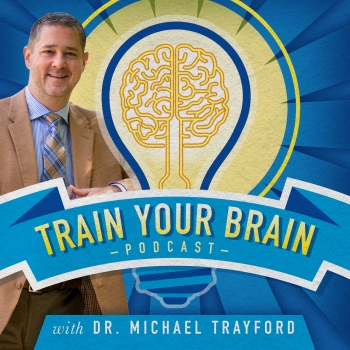Podcast: Play in new window | Download
Hi, and welcome to Episode 002 of the Train Your Brain Podcast with Dr. Michael Trayford. This is one of our shorter, five-minute episodes where we provide a tip for improving your brain function.
The tip for Episode 002 is a simple breathing exercise called the 1:2 ratio. This is a basic, foundational breathing exercise for people who are not getting enough oxygen to their brain. The 1:2 ratio dramatically increases oxygen levels to your brain.
The exercise is simple: Breathe in through the nose, out through the mouth, for a 1:2 ratio. For example, take about four seconds to breathe in through the nose, and eight seconds to breathe out through the mouth.
If you have any concerns regarding the information and applications discussed in this podcast, please consult your physician and a doctor who is experienced in functional neurology. Michael Trayford DC, DACNB is available for consultation by calling (828) 708-5274. Thanks for listening.
There are virtually hundreds of different breathing exercises with different purposes and reasons for doing them. As we move forward we’ll talk about several. However, there is a simple, foundational breathing exercise that you can do each day to help your brain work better. This is particularly helpful for people that are not getting enough oxygen to their brain.
Decreased oxygen saturation levels have a serious effect on the brain. When we breathe normally, we inhale and exhale at a 1 to 1 ratio; meaning, for every second we breathe in, we breathe out for a count of 1 (e.g. 5 seconds in, 5 seconds out). When this happens we’re not really holding the air in our lungs for a significant length of time. This means there isn’t sufficient transfer of air to oxygen in the lungs, which limits the amount of oxygen in our bloodstream available to the brain.
During this breathing exercise you breathe in through the nose and out through the mouth. When doing this make sure you’re sitting comfortably, or you could even be lying on your back. You don’t want to be slouching while doing this exercise because you won’t be able to take in the maximum volume of air. You want to be able to feel your abdomen rise and fall.
The rate of breathing for this exercise happens at a 1 to 2 ratio. When you inhale, that breath going in should take around 4 to 5 seconds. You don’t need to hold your breath. Instead, you can tighten your lips a little bit as you breathe out, which will slow it down to take about twice as long, or 8 to 10 seconds.
You could time this with a stop watch or do it roughly by keeping track in your own mind. The key is to make sure that you’re breathing out longer than you’re breathing in. This exercise can actually increase oxygen levels in the blood stream within 30 seconds to a minute after beginning.
You can do this exercise throughout the course of the day. Each time try to do around ten breaths. As you do this you will start to effectively train the brain to take in that breath, and retain it a little longer as you breathe out. This improves oxygen levels far better than just breathing to breathe.
Breathing is something we need to do, so it’s something that we should do well. For most people this is going to be a particularly effective exercise. This is particularly true at certain times of the day when the brain might be lacking a little bit from an energy standpoint. Doing this deep breathing exercise can help raise your energy levels without having to resort to sugar, caffeine, or some other type of stimulant.
It’s important to reinforce that in this particular exercise you don’t actually hold your breath at any point. In fact, there might be some instances where someone has a medical problem where holding their breath could cause them to pass out. This exercise is about breathing in and immediately out. As your breathing becomes more efficient you can begin to explore more advanced breathing techniques.
Perform about 10 of these breaths, multiple times a day, throughout the course of the day. And be sure to sit properly so you can feel the stomach rise and fall. Maintaining good posture is important while performing the 1:2 ratio breathing exercise.
If you have any concerns regarding the information and applications discussed in this podcast, please consult your physician and a doctor who is experienced in functional neurology. Michael Trayford DC, DACNB is available for consultation by calling (828) 708-5274. Thanks for listening.
Links for this episode:
Learn more at APEX Brain Centers.com
Read the APEX Brain Centers BLOG
Follow us on Facebook
On Google Plus
Follow APEX Brain Centers on Twitter
And here is the Twitter handle for this podcast: @BrainPodcast365
Visit our YouTube Channel

